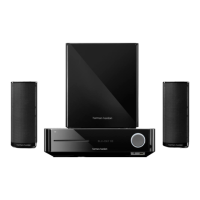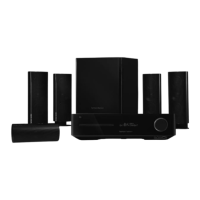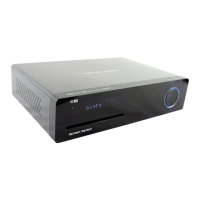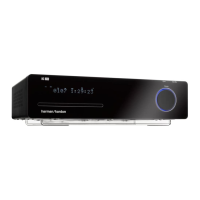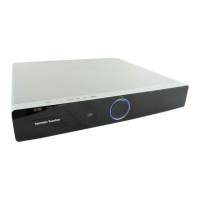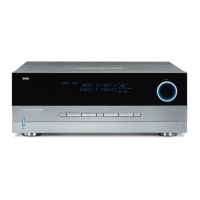Connections
17
BDS
Connecting Audio Sources
TV
Tape Deck
-OR-
To Audio
Output
To Play
Output
To Coaxial
Output
To Optical
Output
To Optical
Output
Cable/Satellite Tuner
Digital Audio Source
Analog Audio Inputs 1 and 2: If you have an audio-only analog source component (such as a
tape deck), connect its left and right analog outputs to the Analog Audio Input 1 or Analog Audio
Input 2 jacks as shown in the illustration.
NOTE: To hear a TV show through your BDS system, you need to connect the audio output of
your TV to the BDS receiver. If your TV has a digital-audio output, you can connect it to one of
the BDS receiver’s digital inputs (see below). If your TV does not have a digital-audio output,
you will need to connect the TV’s analog-audio output to the BDS receiver’s Analog Audio Input
1 or Analog Audio Input 2 jacks.
Coaxial In and Optical 1/Optical 2 In: If you have an audio-only digital source component
(such as a CD changer or video game), you can connect it to one of these inputs, as shown
in the illustration. When using the Optical 1 and Optical 2 digital connections, gently push the
cable connector through the panel connector’s built-in shutter until it is firmly seated in the
connector.
NOTE: Use only one type of digital connection for each source component.
Connecting to a Local Area Network (LAN)
Use a CAT. 5/RJ45 network cable (not supplied) to connect the BDS receiver’s BD-Live
connector directly to a network router, a network switch, a network modem or an Ethernet
network wall jack that has Internet access.
NOTE: The BDS receiver can not access content on other networked devices. The Network
connection enables only the receiver’s BD-Live features. See BD-Live Interactivity, on page
25, for details.
Network
Modem
Cat. 5/5E
To
Internet
Connecting the AC Power
The BDS receiver comes with a detachable AC power cord. This type of cord makes it
easier for you to install and connect all other system wiring to the receiver’s rear panel.
The subwoofer has a non-detachable power cord.
NOTES:
s The power requirement for the BDS receiver is 110V – 240V AC, 50/60Hz, 110W
(BDS 5 receiver) or 70W (BDS 2 receiver). The power requirement for the subwoofer
is 110V – 120V AC, 60Hz, 200W (USA) or 220V – 240V AC, 50/60Hz, 200W (EU).
Connecting to a power source other than the ones listed may damage the receiver
or subwoofer, or cause abnormal operation.
s Before connecting the AC power cords to wall outlets, confirm that you have
correctly made all of the speaker connections, video connections and audio-
component connections.
Connect the female end of the receiver’s detachable power cord to the receiver’s AC
Power Input connector. Plug the other end into a working, unswitched AC outlet. Plug the
subwoofer’s power cord into a working, unswitched AC outlet as well.
PL0004-01001
Receiver
110V – 240V,
50Hz/60Hz
Subwoofer
USA: 120V, 60Hz
EU: 220V – 230V,
50Hz/60Hz
Set the receiver’s and subwoofer’s Main Power switches in the “On” position. The receiver’s
Power indicator will turn amber, indicating that the receiver is in the Standby mode.
s The subwoofer’s LED will not light up until it receives a turn-on signal. See Subwoofer
Controls and Connections, on page 7, for details.

